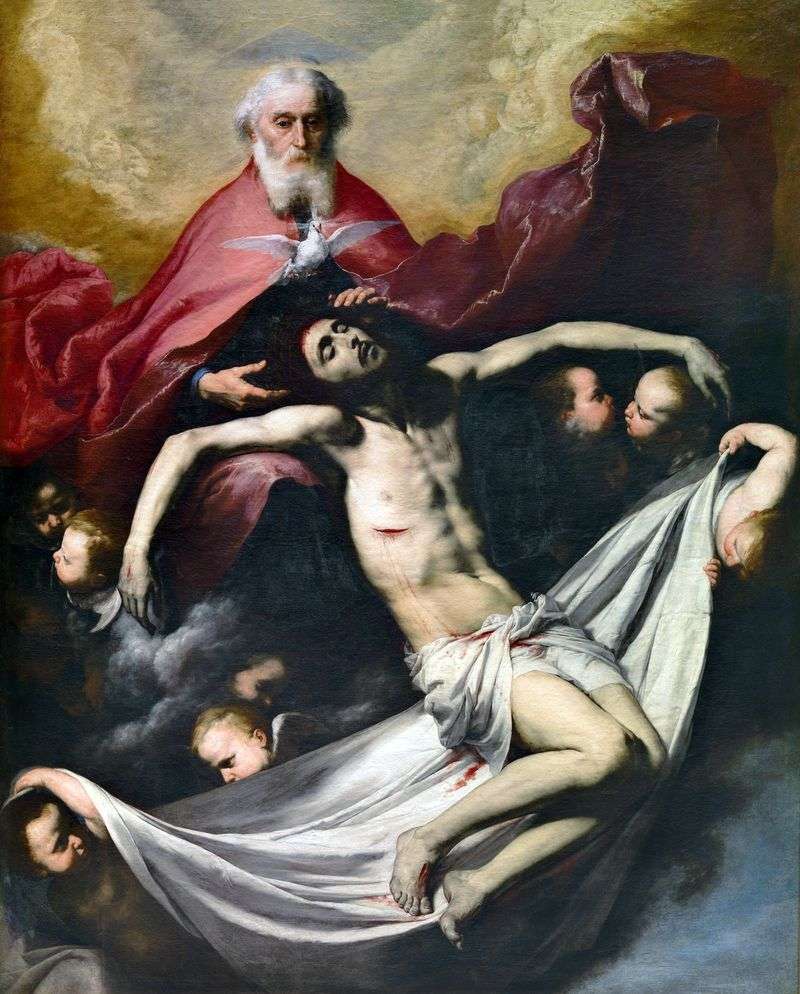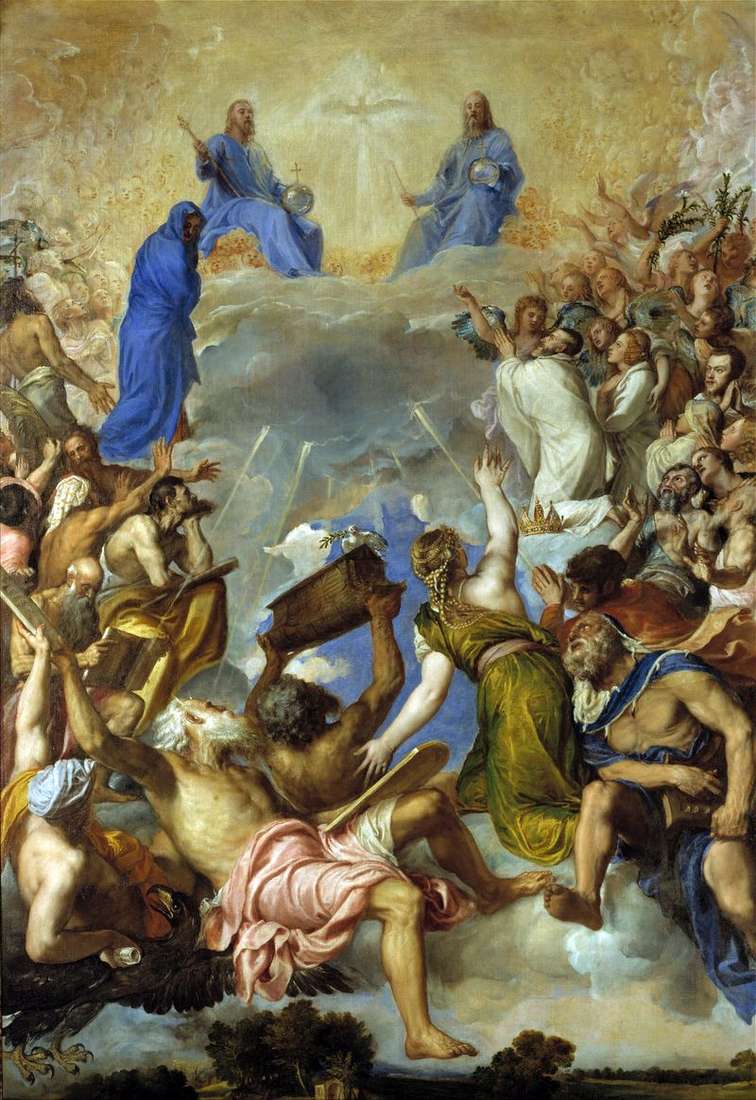
Masaccio represents the image of the Trinity as it was in the tradition of the Renaissance, where God the Father was depicted as a gray-bearded patriarch sitting on the throne behind and above the crucified Son, supporting His cross with outstretched arms. Over the head of Christ in the shape of a dove hovered the Holy Spirit. Such an image, known as the See of the Atonement or the See of the Salvation, became widespread in the 14th century Florentine painting.
However, the masterpiece of Masaccio differs in some features. First, no one has ever created such a monumental size image. Secondly, Masaccio wrote to God the Father standing, which he probably wanted to bring closer to him a priest who serves the mass and celebrates the Eucharist. Meanwhile, before Masaccio, God the Father was depicted sitting on the throne, as we see it, for example, in the paintings of Nardo di Chone. “Trinity” – one of the first works in the history of world painting, in the composition of which the laws of linear perspective were applied, creating the illusion of three-dimensional space. The architectural frame of the picture gives a strong influence here Brunelleschi, and many researchers even believe that he was directly involved in the creation of the fresco.
Under the arch of a massive arch, the artist painted the figures of the Holy Trinity. On the sides of the crucifixion stand the Mother of God and the Apostle John, and outside the sacred space, outside the arch, there are two knees. Most likely, these are portraits of people who ordered the Masaccio picture. The image below shows a tomb with an inscription facing each of the spectators: “I was like you, and you should become like me.” Thus, the tomb reminds us of the inevitability of death, and the image of the Trinity gives rise to faith in the salvation of the soul. This fresco was one of the first to be created with the help of cardboard – large, full-scale drawings, they were applied to the wall, and then outlined with contours of wooden style. As in the case of any mural painted on fresh plaster, despite the fact that the picture was poorly preserved, the researchers could determine how long the artist continued to work.
In this case, Masaccio took 28 days. Most of the time he spent writing his head and face. Images of the Holy Trinity In Christian culture, there were several traditions of the image of God the Father, God the Son, and God the Holy Spirit. The epochs changed, and with them the visual representation of the Trinity. The doctrine of the Trinity, that is, the representation of God as the trinity of the Father, Son and Holy Spirit, is one of the cornerstones of the Christian faith.
For the first time, the Trinity as God, united in three persons, is spoken of in the Gospel of Matthew. The resurrected Christ sends his disciples-apostles to preach with the words: “Go, then, teach all nations, baptizing them in the name of the Father and the Son and the Holy Ghost.” In medieval painting, the image of God the Father had a symbolic meaning. This was due to the fact that the church did not allow artists to write what is impossible to see. At the same time, there was a tradition to depict the Trinity in the form of three interlaced rings or in the form of a trefoil.
Especially often such shamrocks appeared on church stained glass windows. Later, artists began to depict the Trinity in the form of three human figures. For example, on the icon of Andrei Rublev, the Trinity is represented by three angels. More rarely, the image of the Trinity was expressed by the figure of God the Father, the Son sitting at his right hand, and the Holy Spirit floating between them in the form of a dove. In the engraving of Durer, God the Father himself supports the body of the Son taken from the cross. This scene has much in common with the common in the Renaissance drink – painterly or sculptural compositions depicting the lamentation of Christ.
 Holy Trinity by Masaccio
Holy Trinity by Masaccio Trinity by Husepe Ribera
Trinity by Husepe Ribera Holy Trinity by El Greco
Holy Trinity by El Greco The Coronation of Our Lady by Diego Velasquez
The Coronation of Our Lady by Diego Velasquez The Trinity and Death of Christ by Ludovico Carracci
The Trinity and Death of Christ by Ludovico Carracci Madonna with Angels and Saints (Triptych of San Jovenale) by Masaccio
Madonna with Angels and Saints (Triptych of San Jovenale) by Masaccio The Trinity in Glory by Titian Vecellio
The Trinity in Glory by Titian Vecellio Miracle with a statir (Payment of tax) by Masaccio
Miracle with a statir (Payment of tax) by Masaccio